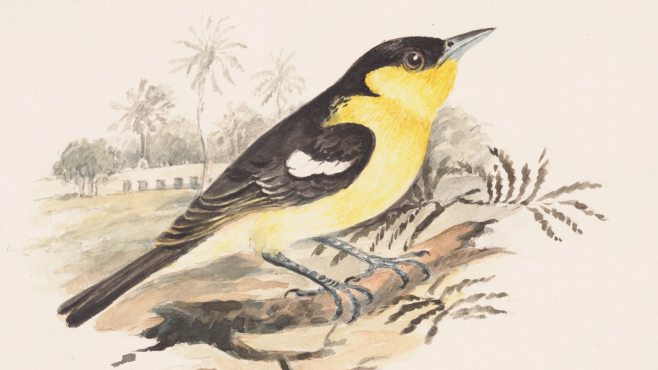While Elizabeth Gwillim’s bird paintings have typically been more lauded than the fish paintings, Mary Symonds’ fish are by no means poorly executed. While some of the watercolours lack detail compared to Elizabeth’s birds, or show that the artist took some artistic license when completing the images, they are certainly not inaccurate. Indeed, when comparing these images to contemporary drawings of the same species, we can see that the artist carefully observed her specimens. We know that Mary painted “above thirty sorts” of fish. However, it is possible some of the remaining fish paintings in this collection were done by Elizabeth.
The fish in the Gwillim Collection are portrayed in the “representational style,” meaning they are depicted laterally with no or a minimal background. This was a popular style used to depict fish, and can be seen when comparing Mary’s works with contemporary naturalists.
A comparison of the Takifugu oblongus:


Right: “T. Oblongus” in Francis Day, The Fishes of India Vol. 2 (London: Bernard Quaritch, 1878): Plate CLXXXII, via Wikipedia Commons.
A comparison of the Lutjanus johnii:
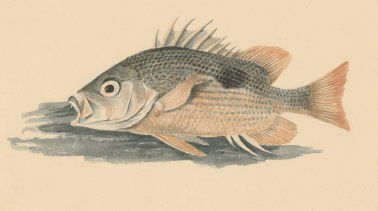

CA RBD Gwillim-2-10.
Right: “Coius catus” in Francis Hamilton, An account of the fishes found in the river Ganges and its branches (Edinburgh: 1822): Plate 38, Figure 30, via Wikipedia Commons.
Another comparison of the Lutjanus johnii:


CA RBD Gwillim-2-10.
Right: “Anthias Johnii” in Marcus Bloch, Oeconomische Naturgeschichte der Fische Deutschlands (1792): Plate CCCXVIII, via Wikipedia Commons.
Mary’s paintings can also help provide the historical context of Kovalam’s waters. For instance, the Glaucostegus obtusus is now considered critically endangered. See a comparison of Mary’s Glaucostegus obtusus, which depicts a juvenile specimen:


Right: “Rhinobatus granulatus,” in J. Müller and J. Henle, Systematische Beschreibung der Plagiostomen, (Berlin: 1841): Plate unnumbered, via Wikipedia Commons.
A comparison of the Chaetodon decussatus:


Left: “LXXXIII”, in Patrick Russell, Descriptions and Figures of Two Hundred Fishes Vol. 1 (London: 1803): via Wikipedia Commons.
A comparison of the Epinephelus lanceolatus:
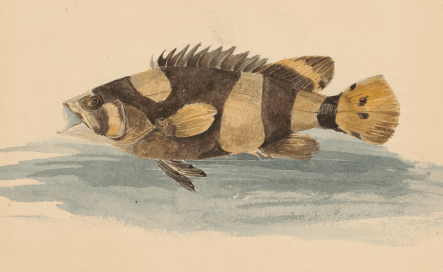

Right: “Serranus lanceolatus” in Francis Day, The Fishes of Malabar, (London: Bernard Quaritch, 1865): Plate 1, Figure 1.
Another comparison of the Epinephelus lanceolatus:
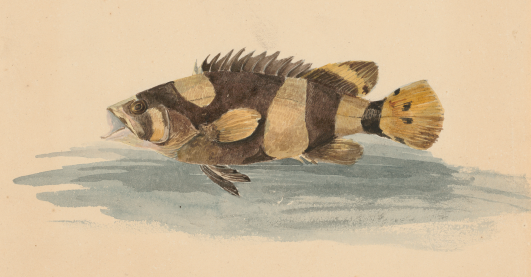

Right: “Holocentrus lanceolatus,” in Marcus Bloch, Titelkupfer zu Dr. Bloch’s Fischwerck (1785-1795): Plate CCXXLI.
A comparison of the Thalassoma lunare:

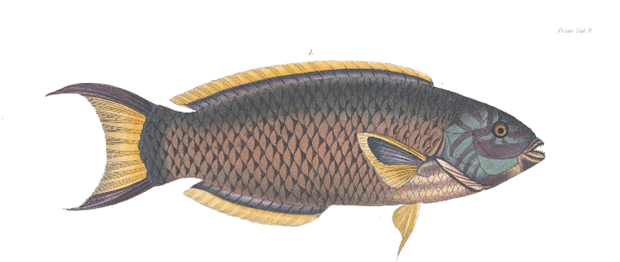
Right: “Julis Hardwickki” in John Edward Gray, Illustrations of Indian Zoology Vol. 1, (London: 1832): Plate 92.
A comparison of the Hyporhamphus dussumieri:


Right: “Kuddera C,” in Patrick Russell, Descriptions and Figures of Two Hundred Fishes Vol. 1 (London: 1803): Plate CLXXVIII.
Another comparison of the Hyporhamphus dussumieri:


Right: “Kuddera B,” in Patrick Russell, Descriptions and Figures of Two Hundred Fishes Vol. 1 (London: 1803): Plate CLXXVII.
A comparison of the Terapon jarbua:

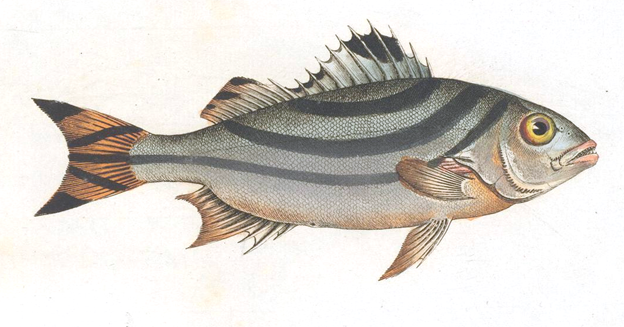
Left: “Holocentrus Servus,” in Marcus Bloch, Naturgeschichte der ausländischen Fische (Berlin: J. Morino & Comp. Taf., 1793): CCXXXVIII. Fig. 1.
A comparison of the Notopterus notopterus:

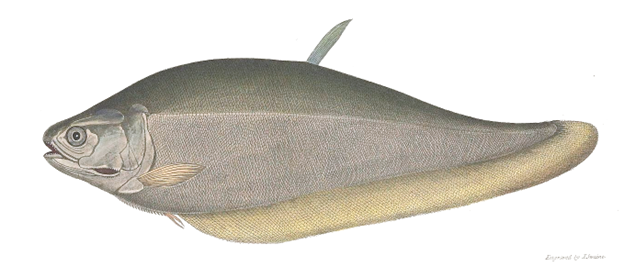
Right: “Mystus karipat” in John Edward Gray, Illustrations of Indian Zoology Vol. 1, (London: 1832): Plate 91.
Comparing Mary’s Myripristis murdjan to Albert Günther’s, we can see that Mary depicted an accurate count of the dorsal spines:
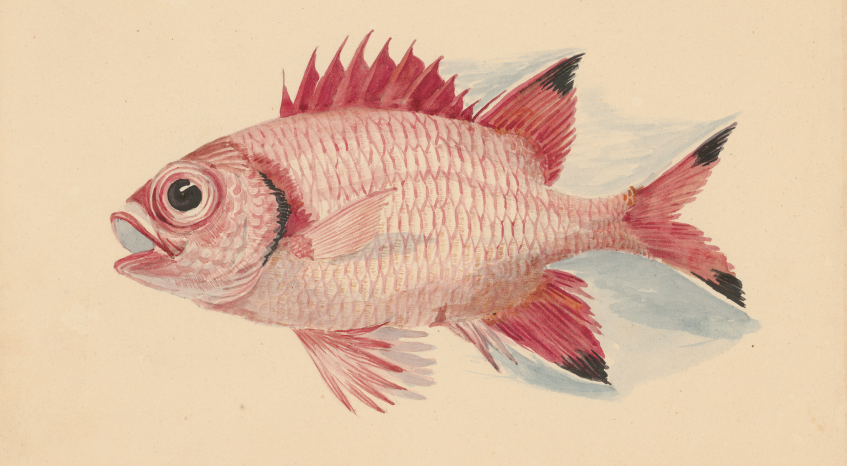
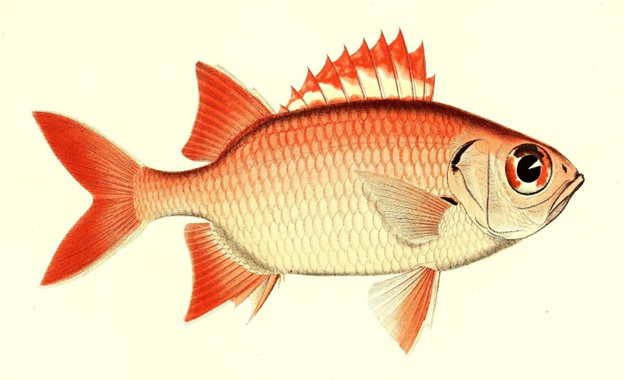
Right: “Myripristis murdjan” in Albert C. L. G. Günther, Albert C. L. G., Andrew Garrett’s Fische der Südsee (Hamburg: L. Friederichsen & Co., 1875): Band I. Bild I. Heft IV. Plate 61.
For more information: Hana Nikčević and Shyamal Lakshminarayanan, “‘Curious for fish’: Mary Symonds’s Fish Watercolours,” Women, Environment and Networks of Empire, Anna Winterbottom, Victoria Dickenson, Lauren Williams and Ben Cartwright, eds., (Montreal: McGill-Queen’s University Press, forthcoming).
Hana Nikčević, “Curious for fish”: Mary Symonds’s Fish Watercolours
Fish comparisons by Shyamal Lakshminarayanan
